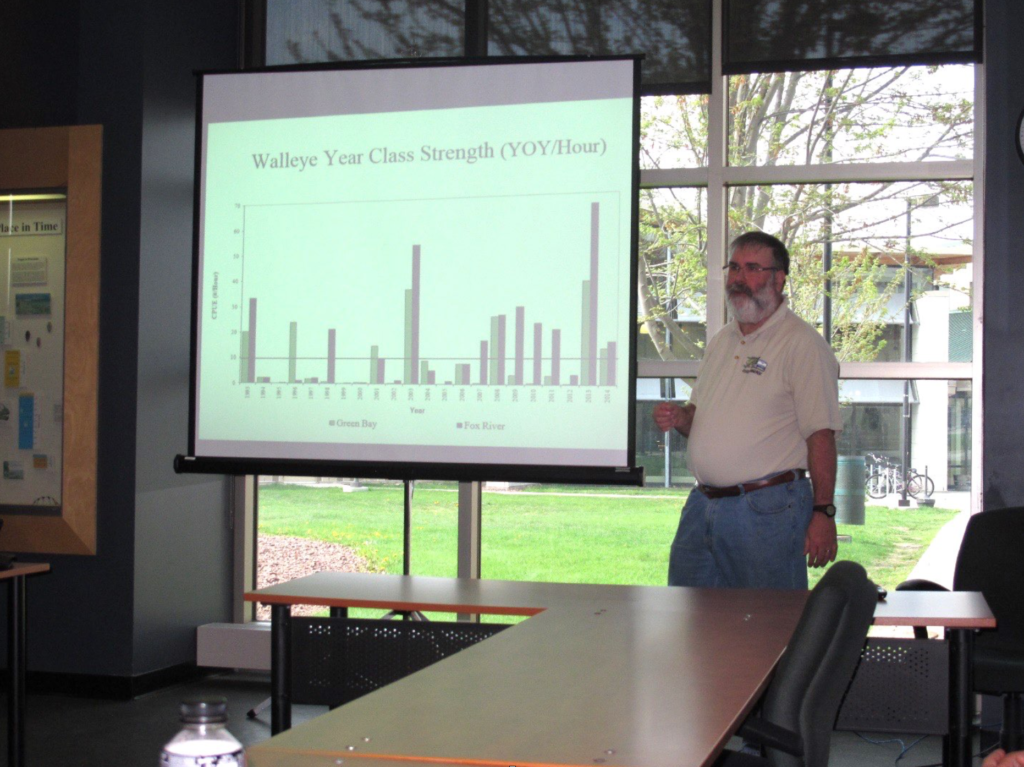July 23, 2015 – Steven Hogler, DNR fisheries Biologist for Manitowoc County, has clarified several issues regarding fish stocking practices in the County lakes. His comments are presented below in interview format:

Steve Hogler, W-DNR Fisheries Manager
Q. Please explain the extent to which the DNR is stocking Manitowoc County Lakes, why, when, under what circumstances.
A. Lakes can be stocked to (1) to provide fishing opportunities within the biological capacity of the lake to support additional fish, (2) following major fish kills, (3) establishment or reestablishment of a population or (4) to act as biological control for out of balance fisheries among other reasons. In Manitowoc this means walleye stocking in seven lakes, northern pike stocking in two lakes, rainbow trout stocking in one lake on a regular basis and a mix of northern pike, largemouth bass, bluegill and yellow perch in several winterkill lakes. In addition streams are stocked with inland brown trout above the first dam and with Lake Michigan species below dams in into Lake Michigan tributary streams.
Q. Are there budget or policy limitations?
A. The availability of fish depends on hatchery space. How many and what kind of fish get stocked depends on policy. Since WDNR raises only gamefish, panfish are not available except from a Federal hatchery for winterkill lakes. Lake to lake transfers of panfish (common in the past) have been halted because of VHS.
Q. You prepare and share with us assessment reports of the fisheries reports for the lakes. Please describe the schedule of the lake inventories, or are they done on an as needed basis.
A. Lakes and rivers are surveyed on a rotational schedule unless a management need such as assessing a lake after a winterkill requires an immediate survey. Larger lakes (greater than 100 acres) or streams with trout or smallmouth bass are surveyed more often, every 4 to 6 years while other lakes and streams are surveyed every 8 to 10 years.
Q. I know you favor re-creation of a native population, is there a conflict between the interests wanting “put and take” exotics and your plan?
A. Yes, there are those that can’t move away from stocking policies of the 1930’s-1970’s where stocking was done indiscriminately. More recent fisheries science has found that this causes more harm than good hence the more restrictive current policies. While we favor stocking that creates or restores self-sustaining populations, DNR also stocks to enhance fishing opportunities in a limited number of lakes where and when it is appropriate and it does not cause negative impacts to fish populations already in the lake.
Q. Where do funds for stocking come from, how might that be increased?
A. I submit all DNR stocking quotas based on need and policy. Funds for stocking generally come from fishing license and stamp sales or from Sport Fish Restoration dollars although on occasion, funding comes from other sources as well. Increasing funding is only one part of stocking, hatchery space and people to run the hatcheries play an important role in how many fish are stocked.
Q. Can you expand on your plans to get to a sustainable, reproducible, population in the lakes?
A. Most lakes, probably over 80-90% do not need stocking since they have stable populations.
Q. Is there an application process to get state funded stock?
A. There are no applications, I submit the quotas, based on policy that outlines factors such as the number and age of the fish stocked, the type of stocking such as rehabilitation or recreation and the types of water that can be stocked. In some cases Lake associations can apply for stocking permits to buy fish from private hatcheries and stock fish in years when DNR does not stock or to stock panfish which DNR does not raise in State hatcheries.

